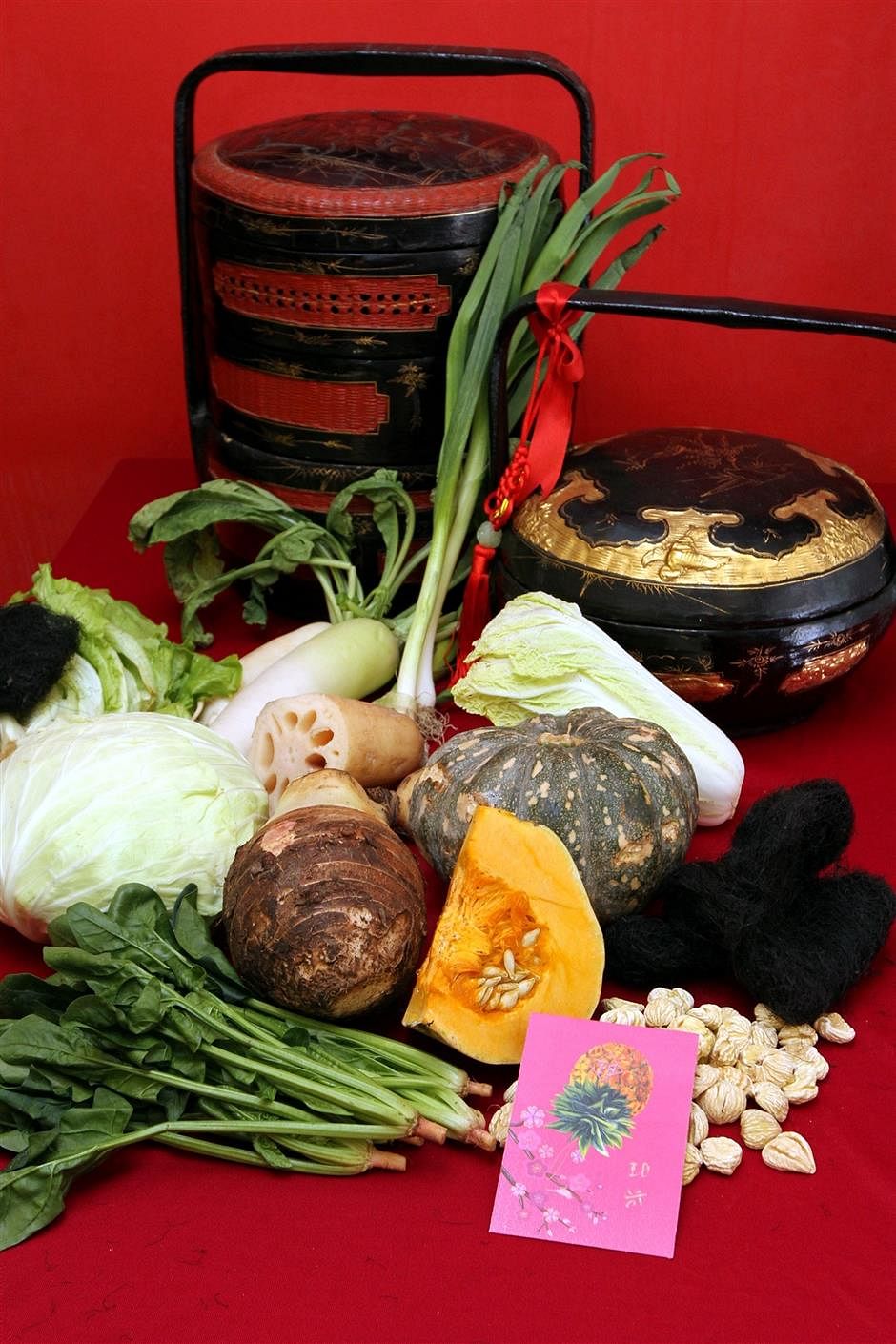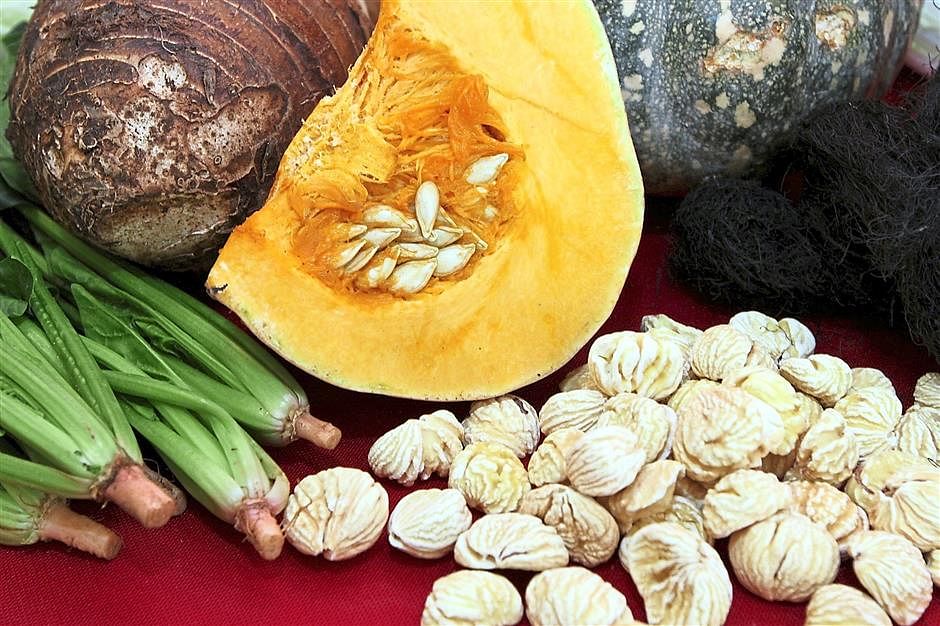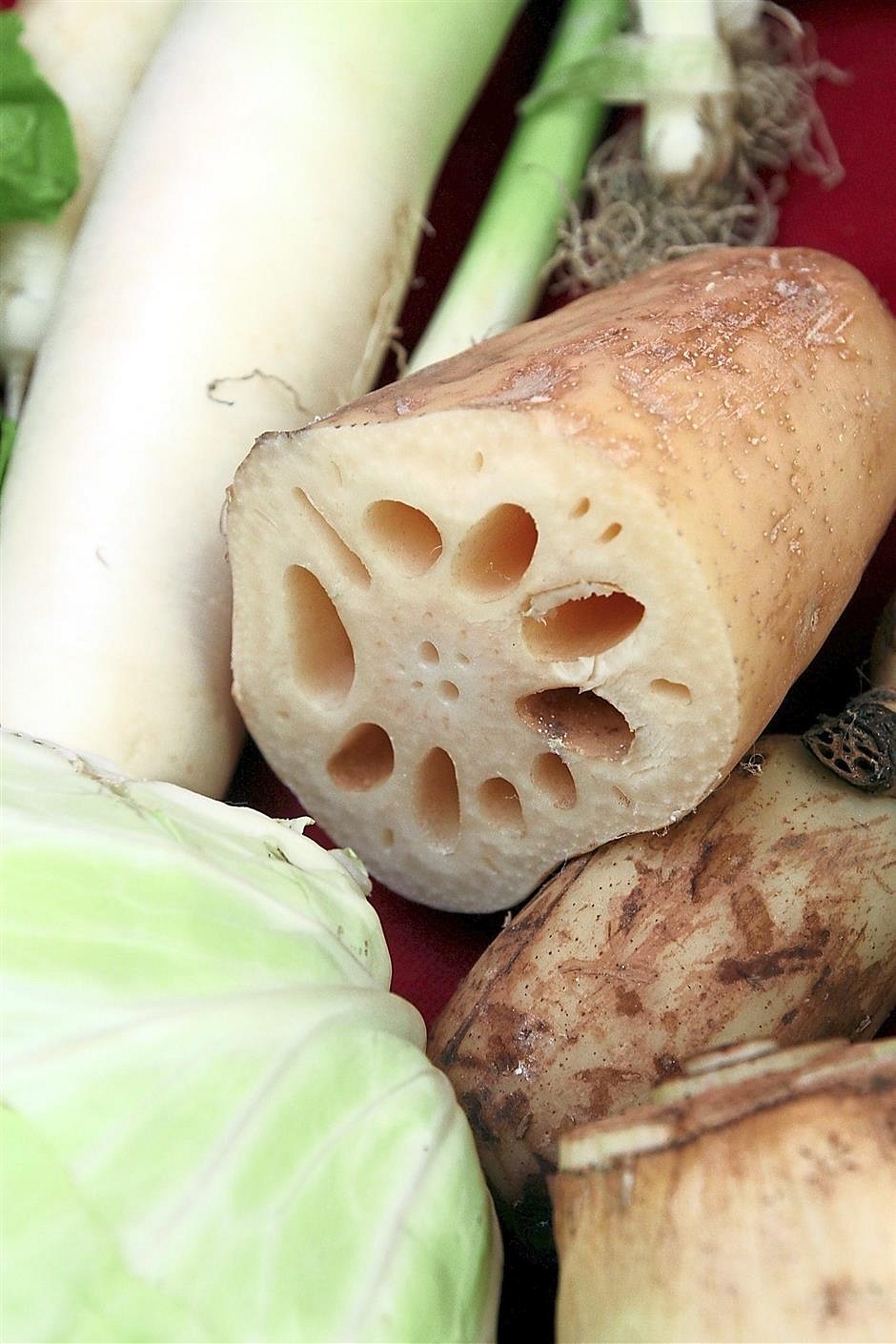(THE STAR/ASIA NEWS NETWORK) - A group of gregarious youngsters is in the hall while the women are labouring in the kitchen.
Siblings and cousins strike up a chat on auspicious ingredients in festive food, their stomachs rumbling while waiting for the glorious meal to be served. The smells of various dishes being cooked are making their mouths water.
A teenage girl says: "Do you know eating he bao dan (fried egg in Mandarin) is special during Chinese New Year? It is symbolic of silver covering gold. You'll be blessed with gold and silver!"
Her cousin chirps in: "Eggs are round. Eating eggs also means all-round success!"
Then someone blurts out: "Nobody eats gua (cucumbers and melons) during CNY. The Chinese pronunciation for melon sounds like death."
"Not true," another girl protests.
"My mum told us that eating pumpkin or golden melon (pronounced kum kua in Cantonese) means 'You're the best' (as in ding gua gua)."
Hearty laughter fills the room.
Many young and old people alike do not know the significance of certain festive ingredients. But Ms Jeanie Lee, like many Chinese housewives, would ensure her festive meals are "prosperous".
"Dishes must include auspicious ingredients. We hope to usher in prosperity, wealth and good fortune," she said.

Lee, 67, is a Taiwanese married to local Chinese chef Lee Weng Eng and has been living in Malaysia for 39 years. This year, she will close her restaurant for five days during the lunar new year.
She has pre-ordered meat, poultry and fish for hassle-free marketing during this festival. However, she will still go out to buy some vegetables.
"I will buy some vegetables a week before CNY. Other greens that can't keep for too long will be bought closer to the day," she said.
Lee plans to cook the reunion dinner and on the first day of Chinese New Year.
For the reunion dinner, her menu is braised spare ribs with yam and pumpkin, steamed garoupa Teochew style, pickled lotus root and fried vegetarian beehoon.
On the first day of CNY, she will cook radish cake and leek soup, fried egg, toasted cubed wholemeal bread and pumpkin soup.
For dinner, the family will feast on roasted eight treasures chicken with stuffing (chestnuts, button mushrooms, bacon and three varieties of steamed rice), curry prawns, kailan stems simmered with dried baby scallops and arrowheads cooked with roast pork. She will also make the lip-smacking CNY cake made with green tea, red beans, sweet almond and melon seeds.

On the second day of the lunar new year, she and her family plan to eat out at a restaurant.
The co-owner of Chef's Lee Noodle House in Taman Overseas Union Garden, Kuala Lumpur, Ms Lee has a master's degree in nutrition from Taiwan Chinese Culture University.
She shares information on the symbolism of auspicious Chinese vegetables, ways to cook them and a recipe for a pickle:
Arrowhead: Known as cigu or nga ku, it is a symbol of benevolence. It is sliced and deep-fried into crispy chips, a popular Chinese New Year snack.
Broccoli: Housewives love it for its green hue and its taste. This vegetable means happiness, health and liveliness.
Black moss: The Chinese call this fa cai (literally means "prosperity vegetable") as it symbolises fortune.
Carrot and radish: Eaten for good luck, these are used in stir-fry dishes, salads and soups.

Chinese spinach: The root of this vegetable (por choy) is slightly reddish and red is an auspicious colour associated with prosperity. Boil the spinach in salted water until limp and transfer to iced water. Squeeze dry and cut it up into 2.5cm lengths. Season with a mix of white sesame paste, black vinegar, soya sauce, sesame oil and sugar.
Eggplant: This vegetable is associated with "extraordinary". The Hainanese stir-fry eggplant with garlic as a vegetarian dish on the first day of CNY.
Golden needle mushrooms: Popularly used for stir-fry vegetables or in reunion steamboat.
Leeks: The Chinese word for leeks sounds like "counting", so these greens are associated with wealth and money.
Lettuce: The homonym for lettuce or sang choi (in Cantonese) sounds like "to grow luck". The Chinese make sure a big fresh bunch is fed to the lions (of lion dance troupes) in the hope of a prosperous year.
Usually eaten raw, it is used to wrap stir-fry yam bean. The Hainanese have lettuce wraps with steamed village capon (castrated cockerel) or boiled three-layered pork belly.
Lotus root: A crispy snack is made from this. Lotus root-peanut soup with red dates and cuttlefish is also a favourite. Cooked Sichuan style, thin slices of lotus root can be stir-fried with minced pork, ginger, garlic, dried chillies, black vinegar, soya sauce and sugar.
Lotus seeds: These are used in dessert such as lin chee kang. The lotus seeds are symbolic of having many children and grandchildren.
Lily buds: These supposedly are to accord the best of blessings.
Mustard leaves (long leaf variety): This vegetable (kai choy) is symbolic of longevity. Some Chinese cook this vegetable without cutting it, but many others cut it up to prevent choking. It is used in the must-have chap choy dish, which is made from leftover dishes, dried chillies, asam keping and sugar. It is cooked on the second day of the lunar new year. When cooked for a long time, this vegetable will become limp. Although this appetising dish is eaten for days, Ms Lee's advice is to finish it in a day as it is not healthy to reheat over a few days.
Peanuts: The shape of peanuts looks like hands put together. In China, the Bai people of Yunnan treat friends, especially males, with peanuts as a show of friendship. Peanuts are served as snacks and boiled in a soup.

Pineapple: This lucky fruit is said to bring prosperity. It can be sliced and eaten fresh or added to cooking. Dishes with pineapples are sweet and sour pork and Thai fried rice.
Pumpkin: Some Chinese believe that if you dream of pumpkin, it means you can expect a bountiful harvest.
Cut pumpkin and yam into medium pieces. Blanch spare ribs and then cook in a pressure cooker for 20 minutes. In a wok, fry chopped garlic and onions, add spare ribs, yam, pumpkin and chicken stock, and simmer for 20 minutes. Season with oyster sauce, soya sauce, sesame oil and pepper. Lastly, add spring onions and simmer two minutes before dishing up.
Red dates: They are used to sweeten soups or in desserts such as snow fungus with red dates.
Snow peas: Also used in Chinese New Year stir-fry dishes for its green colour.

Soybean sprouts: Some Chinese call this vegetable (or big taugeh) ru-yi cai as it looks like a sceptre. These sprouts symbolise "everything is smooth" as in the Chinese idiom, shi shi ru yi.
Blanch bean sprouts, black fungus, chives and shredded carrot. Mix together with sweet black vinegar, soya sauce, sesame oil, fried garlic and pepper. Toss and serve.
For soup, combine soyabean sprouts, carrot, fresh huai shan (Chinese yam) and chicken. In dried form, huai shan comes in dried white slices.
Spring onion: A favourite garnishing, the Chinese like to think that this vegetable represents smartness.
Walnuts: These nutritious nuts symbolise happiness.
Water chestnut: This aquatic vegetable symbolises unity. In Beijing, one's Chinese New Year shopping is completed if a person brought home Chinese water chestnuts. Osmanthus and water chestnut cake is an exotic dessert and symbolishes "flourishing".
White cabbage: The Shanghainese call this vegetable yellow cabbage or huang ya bai (Mandarin). This vegetable is associated with "innocence". This vegetable is also called wa wa cai and is used in steamboat. You can also cook it with dried scallops.
First, soak dried scallops, then steam with ginger slices for 20 minutes until soft. Then shred the scallops. Fry minced garlic with cabbage and add shredded scallops and water. Simmer until cabbage is soft.

PICKLED LOTUS ROOT, WALNUTS AND ASSORTED GREENS
Serves 3
INGREDIENTS
2 hearts of mustard leaves (kai choy)
9-12 walnuts
1 small piece of fresh huai shan (Chinese yam)
3 leaves of cabbage
1/6 of a pineapple
15 pieces of small black fungus (wan yee)
1/4 beetroot, cut into finger lengths
red lotus root
1 lotus root
half a beetroot, shredded
2 tbsp rice vinegar
1 tbsp honey
white sesame paste dressing
2 tbsp white sesame paste
1 tbsp hot water
1 tbsp sweet black vinegar
1/2 tbsp sugar
2 tbsp soy sauce
METHOD
1. Blanch mustard leaves with a pinch of salt and 1 teaspoon cooking oil.
2. Blanch walnuts (and remove the skin), huai shan and cabbage separately.
3. Cut pineapple into small wedges.
4. Soak black fungus for 30 minutes. Add 1 teaspoon salt and simmer for 20 minutes until soft. Drain and dry with paper towels.
5. Cut lotus root into very thin slices. Blanch them in boiling water with 1 teaspoon salt. Drain and dry the slices with paper towels.
6. Mix vinegar and honey with the shredded beetroot. After an hour, drain the juice and use it to soak the lotus root for 20 minutes to get a nice reddish colour.
7. Arrange all the above ingredients on a platter.
8. Stir together the ingredients for the dressing as a dipping sauce. Alternatively, pour the dressing over the assorted greens and toss well before serving.

